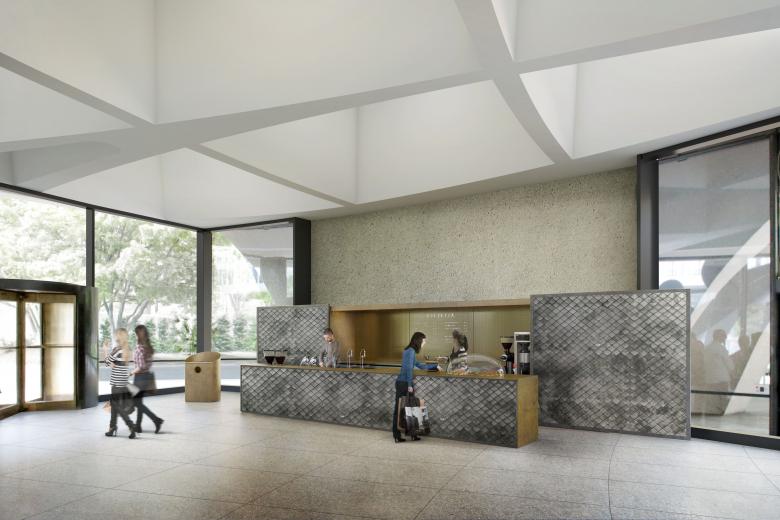Hiroshi Sugimoto to Renovate Hirshhorn Lobby
Japanese artist Hiroshi Sugimoto has been hired by the Hirshhorn Museum and Sculpture Garden in Washington, DC, to transform the lobby inside its Gordon Bunshaft-designed building -- the first cohesive redesign in the museum's 42-year history.
The project is set to be completed in February 2018, coinciding with the opening of Dolcezza Coffee & Gelato in the lobby's west end. According to a statement from the Hirshhorn, these initiatives are "part of a larger plan to transform the overall museum experience, designed to encourage creativity and foster greater connections between visitors and the artists of the time."
Sugimoto, working with Tokyo's New Material Research Laboratory (NMRL), will retain the original building's terrazzo floor, coffered ceiling, and exposed concrete walls, focusing on enhanced accessibility and visitor experience. He will reconfigure the entrance and insert elements of his own design, including furniture, welcome desks, signage, and a 20-foot coffee bar. Furthermore, a light sculpture by Iceland's Olafur Eliasson will be inserted into the space.
Known to architects for his blurry photographs (taken with an old large-format camera with its focal length pushed to twice-infinity) of iconic works of architecture, Sugimoto is an unexpected yet logical choice for renovating the Hirshhorn's lobby. The artist's appreciation of modern architecture is apparent in his photographs as well as his words: "Early-twentieth century modernism was a watershed moment in cultural history, a stripping away of superfluous decoration. ... I discovered that superlative architecture survives the onslaught of blurred photography." It's not difficult to see these words applied to the circular design of Bunshaft's Hirshhorn Museum.
In the design of the lobby, Sugimoto looked to the Hirshhorn's unique ring shape for inspiration. "I became fascinated by the roots of an enormous tree, which fanned out to form a large circle, and I decided that this was the circle I would install in the Hirshhorn lobby—a symbol of life," he said in the Hirshhorn statement. "All art takes its inspiration from the power inherent in nature, and my hope is that as visitors enter the museum, they will experience the balance of the man-made and natural circles."

